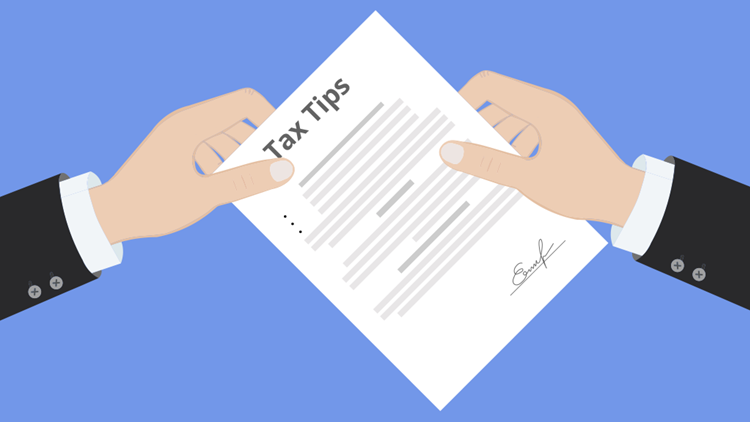
The wait is over; the filing season for 2021 income tax returns has been opened by the IRS. But before taxpayers start sharpening pencils, cranking up the calculator and putting on a pot of coffee, they need to know they’ve got everything together to get the job done right.
The IRS has put together its annual Tax Time Guide that helps taxpayers navigate the trials of taxes and file an accurate return. Here are some tips that can make anyone’s income tax season a lot less daunting.
Wait for it…
As much as some taxpayers want to get started on their taxes early in the game, it’s a better bet not to file prematurely. Unless a taxpayer knows they have all the right documents at hand, they risk making mistakes that could delay or even cost them their refund.
January is usually the month when year-end forms start showing up in taxpayers’ mailboxes, or are sent via email. No matter how they arrive, taxpayers need to carefully look over their forms and contact the payer immediately if a correction is needed or an updated mailing or email address.
Some forms—like some Forms 1099, for example—don’t have to be issued until later in the tax filing season.
Here’s a quick list of important forms taxpayers may need to file, but should wait until they have these in hand before they do:
- Forms W-2 from employer(s)
- Forms 1099 from banks, issuing agencies and other payers including unemployment compensation, dividends and distributions from a pension, annuity or retirement plan
- Form 1099-K, 1099-MISC, W-2, or other income statement if they worked in the gig economy
- Form 1099-INT if they received interest payments
- Other income documents and records reporting virtual or crypto currency transactions
- Form 1095-A, Health Insurance Marketplace Statement, to reconcile advance Premium Tax Credits for Marketplace coverage
- Letter 6419, 2021 Total advance Child Tax Credit Payments to reconcile advance Child Tax Credit payments
- Letter 6475, 2021 Economic Impact Payment, to determine eligibility to claim the Recovery Rebate Credit
Report advance payments
This year, there’s a new wrinkle in the form of Letter 6419, Advance Child Tax Credit Reconciliation, which was sent out in January by the IRS. Taxpayers need to use the letter to compare the amount of the Child Tax Credit they received in advance payments in 2021 with the total amount of the credit they should get. If there’s any remaining credit they can claim, they can receive it in the form of a tax refund.
If they were paid more in advance than they qualify for, however, those taxpayers may have to pay extra tax due to make up the difference.
As with all pertinent tax documents, the IRS urges taxpayers to check this information carefully.
Taxpayers who were issued a third Economic Impact Payment won’t have to include anything about it on their income tax return. Those who didn’t qualify for a third payment—or didn’t get the full amount—may be eligible for some of it in the form of the 2021 Recovery Rebate Credit.
To claim the credit, taxpayers need the total amount of their third Economic Impact Payment for inclusion on their return. Taxpayers can get the amount from their Online Account on IRS.gov, or they can wait to receive Letter 6475 in the mail.
The Online Account can be a very powerful tool for filers, providing their tax information securely and quickly.
Using the Online Account when filing returns, taxpayers can see:
- The total amounts of Economic Impact Payments issued for tax year 2021
- The total amount of advance Child Tax Credit payments
- Their adjusted gross income from their last tax return
- The total of any estimated tax payments they made, and refunds applied as a credit
Taxpayers can do more than that, of course. After logging in, taxpayers can make and track their tax payments and manage their communication preferences. They’ll also have the option to go paperless and request email notification for certain notices available online.
Taxpayers who would like to get their IRS tax notices in Braille, large print, audio or electronic formats can download Form 9000, Alternative Media Preference from the IRS website.
Once completed, the form can be mailed in by itself, included along with the taxpayer’s tax return, or taxpayers can call the IRS at 800-829-1040 to choose their preferred format.
Similarly, Spanish speakers—or those who speak one of 20 other languages—can use Schedule LEP, Request for Change in Language Preferences, to get communications in their particular language. Forms 1040 and 1040-SR are now available in Spanish.
e-File and direct deposit are encouraged
Lastly, the IRS strongly encourages taxpayers to file their income tax returns by electronic means, avoiding paper returns, and to choose direct deposit for any refunds. That, they stress, will speed up processing and keep refunds moving quickly – 21 days in most cases.
In addition, taxpayers should take extra steps to ensure they’re filing an accurate return. Mistakes in copying figures, math errors and other lapses can lead to a return being reviewed by an IRS employee, and that takes time. Paper, whether in the form of a paper return or a paper check will take even longer to process this tax season.
Need additional help? See Publication 17, Your Federal Income Tax (For Individuals) on IRS.gov.
Source: IR-2022-23

